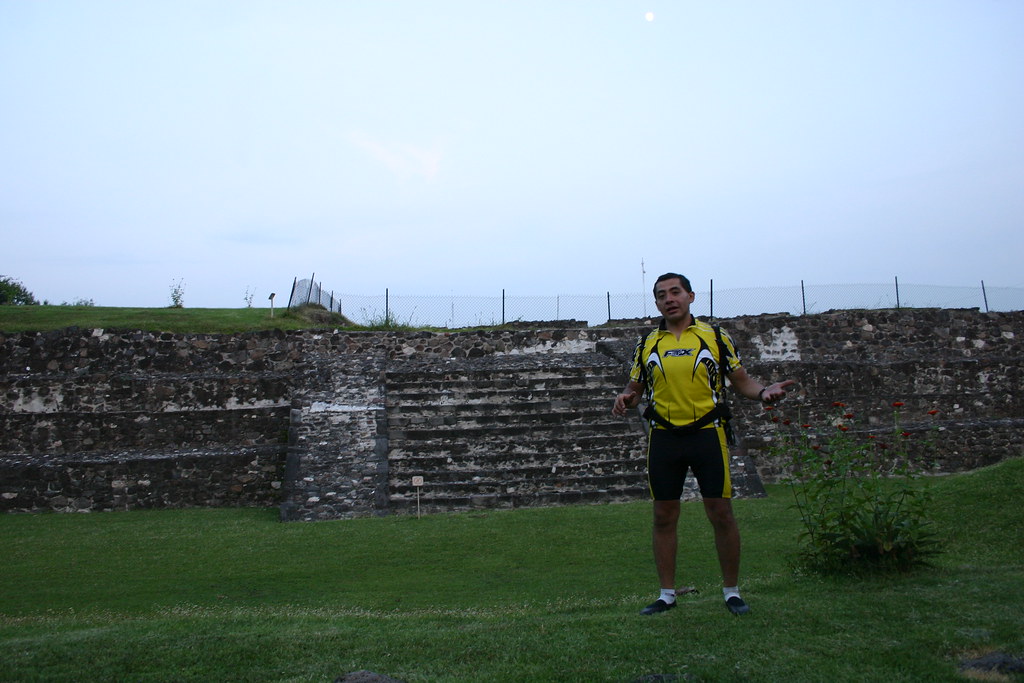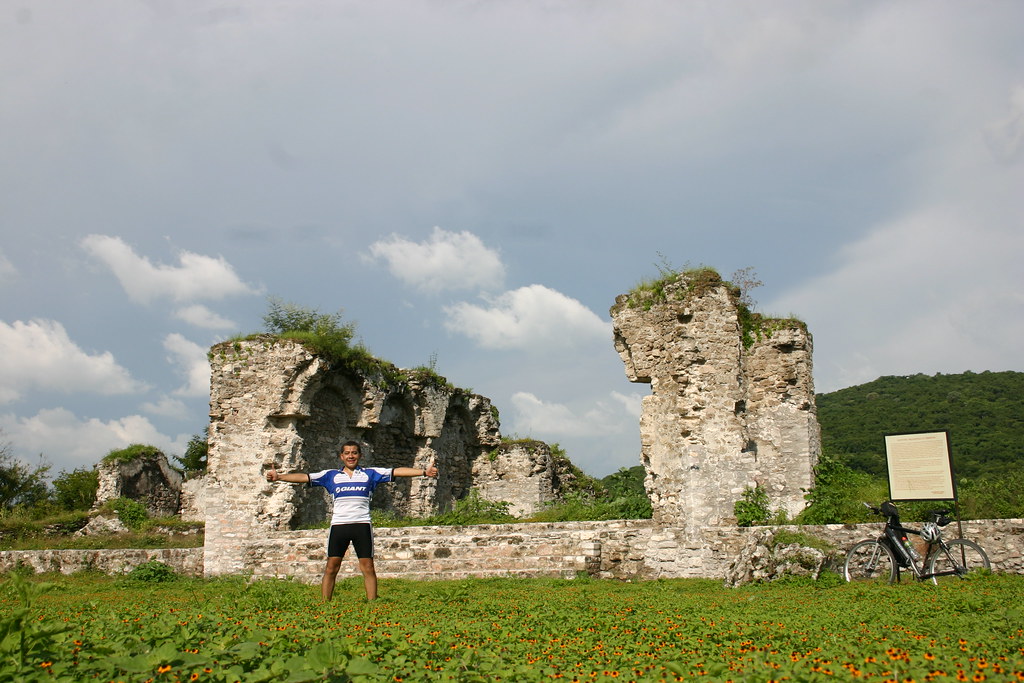Yautepec Archaeological Site + Convents Route I (Morelos), 23.09.07



In order to ride this route from Mexico City center, I took Tlalpan Av. to the south and later Division del Norte Av, which would take me directly to Xochimilco and later to San Gregorio Atlapulco, exit point to the Oaxtepec highway.
Once along this highway, and passing along the way Milpa Alta and Tlacotenco, a moderate ascent (grade: 3 %) starts towards La Loma summit (alt: 2900 m). In that sightseeing point I stopped a little to take the compulsory photographs, and later I continued the ride downwards. Six kilometers after passing the town of San FelipeNeri, I took a left branch that would lead me firstly towards Nepopualco (a small yet beautiful town lost in the middle of nowhere where I could take some cosy photos of its simple yet beautiful church), and later, to Totolapan.
In Totolapan I headed directly towards its magnificent Convent. It features an impressive facade and equally imponent atrium. Unfortunately, this convent presents no museum at all. After admiring its architecture, I decided to continue the ride. I went to the center of Totolapan where in its market I could finally eat some 3 kilograms of fruit (between bananas, apples and tunas), which was badly needed at this rather early hour.
In Totolapan I could finally have a glimpse of several people that use Nahuatl as their language ! Some of them even fancied their custom dresses. I sincerely hope I could find more of this towns where people still speak Nahuatl (the language the Aztecs used before the Spanish conquest) in my future rides.
I continued the ride this time towards Tlayacapan, a town largely know for its clay and ceramic pottery. I headed again directly to its center, where its magnificent Convent is located (in the same square the Convent, Municipal Palace and market can be found). The atrium there was even bigger, and the facade of the convent, simply monumental. And best of all, this Convent did feature a Museum. Although the entry was not free (fee: 10 pesos), taking photographs was not allowed, not even without flash. So I could not present you the beauties that are located inside the Convent's walls: precious frescoes, marvelous oil pictures, magnificent architecture and as a premium: some mummies from boys and girls (from the past centuries upper classes) buried in the gardens of the convent.
Once finished the visit, I proceeded riding towards Oaxtepec, arriving promptly (as the road is pure descent) at its Convent in the center of the town. Unfortunately, I arrived some 30 minutes later than the Convent's opening hours (it closes at 17:00). So I had to content myself with taking some pictures of its facade (not at all as imposing as the facades I had already seen in other convents in this very same journey, anyway). After paying a sort visit to the church adjacent to the convent, I abandoned Oaxtepec, riding this time towards Cocoyoc, where I took the right branch towards Yautepec.
Searching for the archaeological site I arrived unexpectedly first at Yautepec center, so I had to undo my path a little, finally arriving at the site at 18:40, again 40 minutes later than the closing hour. Fortunately, the site master was kind enough to allow me a short and quick visit to the site (once I exposed my motives and route), so I could finally present you the photographs of this beautiful and impressive archaeological site. The site features a royal Palace that whose use was reserved for the Aztec nobility. Basements of rooms and corridors are clearly visible. The site area is really big, as it comprises a whole block. In fact, the site is even bigger, withpre-Hispanic buildings buried under presently built houses.
At 20:00 (when I finish the visit to the site) and already under the cover of the night, I continued the ride, this time towards Cuernavaca (Morelos state capital), crossing in my way the famous Wolfs Canyon (Cañón de Lobos), a high-grade climb that would take me towards La Joya (where I could purchase a much needed water bottle) and later to Jiutepec and finally to Cuernavaca. The problem at crossing the Wolfs Canyon was not really the climbing (although a considerable effort was required), but that I had to made that ascent without solar light, guiding myself only by the passing cars lights. Once I arrived at la Joya (first town after the Canyon) I considered myself safe, since from there, I could ride aided by the occasional urban lights.
Once In Cuernavaca, I paid a short visit to its main square, where the Government Palace and Plaza are located. I headed then to the Pullman bus station to take the 22:15 bus back to Mexico City (fare: 63 pesos), which put me in Taxqueña South bus terminal at merely 23:25, which in turn enabled me to use the subway (closing hour: 00:00) to arrive at my house some half hour later.
As usual, all photographs are available in the following photoset. The GPS track is available in both formats: GPX and KMZ.
Thank you for reading. Till the next travel.





